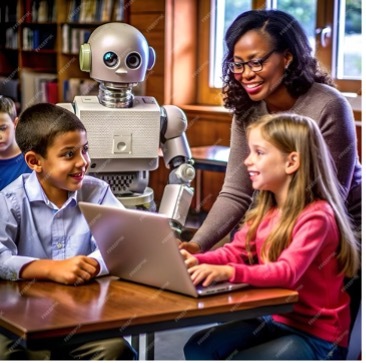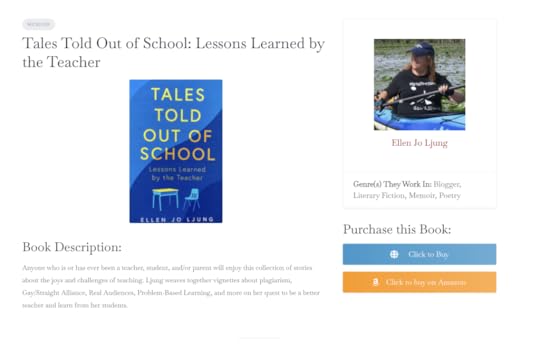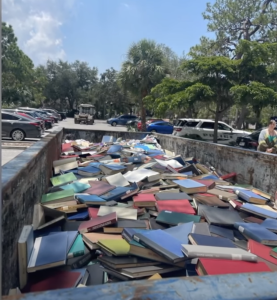Ellen Jo Ljung's Blog, page 2
March 7, 2025
Why Teach?

I’m writing the final chapters of my novel about a Connecticut teacher who moves to Texas for her husband’s job and has to deal with micromanagement and censorship by her administrators. Although that’s never happened to me—I was lucky enough to teach in a period of relative autonomy and few culture wars—I realize that bits and pieces of my own experience certainly have “leaked in.” I find myself looking at the current climate in schools, even in “woke” Illinois where we live, and wondering what it would be like to teach now. That’s led me to explore what drove me to teach in the first place, what I believe is important for teaching and learning.
I ended my years in the public schools a very different teacher from my earliest efforts. I wrote about that evolution in the previous entry, but there my focus was on the ridiculous concept that anybody can walk into a classroom and teach effectively without good training – thanks, Wyoming! [see previous blog]
Today I find myself preoccupied with the importance of fostering critical thinking. In my novel, my protagonist routinely gets in trouble because she encourages students to think and question, and parents and administrators feel she’s displacing the parents and telling students what to think. Not at all. The best teachers encourage students to think for themselves. They don’t want their learners to parrot their parents or their teachers. I believe that the main purposes of teaching include helping learners to read deeply, to understand how to find and evaluate information, and to develop critical thinking habits of mind that help them draw their own conclusions. Too many use the culture wars as a blockade for that kind of teaching and learning.
The only time I enjoyed history in my public schools happened sophomore year, when Mr. Vance challenged us to read books like The Armada about the attempt of the Spanish Armada to invade England in 1588. Garrett Mattingly tells the story of the people involved; Mr. Vance urged us to look at what they did and why they did it, then what we could learn from that. The rest of my social studies classes required memorization and recitation of facts without much context and purpose. Discovering political science classes in college, classes that focused on the why and how and what we can learn from that, was a revelation to me. I loved being encouraged to make those connections.
Later in my career, I pushed students to look at the big ideas that arose in the literature we were reading. What does it mean to be a good person? Do we have enough free will? What makes a society just? How does power corrupt? And so many more. While other English teachers gave multiple choice and short answer semester exams, I’d select one big idea and ask my students to trace it through the works they’d read. I allowed them to prepare and bring a 3 x 5” card with notes [but not a magnifying glass!] to the exam. They never knew which big idea I’d choose, and they often met with fellow students to discuss and evaluate the works, exploring all the big ideas they could find. Reading their responses showed me that they’d learned about the world from the literature, that they could use those learnings to be better at asking and answering questions themselves.
State standards developed with teacher input can be invaluable in building a common core of understanding, but teaching to the test does not encourage critical thinking. Too often teachers focus their teaching on improving student performance on a prepackaged exam rather than enhancing their understanding. This approach doesn’t even allow enough time to develop critical thinking skills. If we want a thoughtful populace, we need to support teachers who teach students to ask questions and to develop and be able to justify their answers.
I was driven to write my teaching protagonist’s story to ease my own frustration with the wrong-headed direction of public education. A form of useful therapy, the writing also has pushed me to be clear in my beliefs about teaching and learning. I miss the classroom. I miss those “ah ha” moments my students sometimes had. I wish I could believe that such efforts are still practiced and valued for many students now and in the future, but news stories from too many states suggest that’s a pipe dream.
February 13, 2025
Where Do Good Teachers Come From?

I’m one of the lucky ones. I became a better teacher because I worked in schools that supported professional development. I remember the education prof who told me I was so focused on content that I should work toward post-secondary teaching. I remember the students who used to tell me that I could talk bell-to-bell on fewer breaths than anyone else! I remember the day I returned from a conference where a presenter convinced me that worksheets, even those as clever as I thought mine were, were not productive, so I had my kids shred theirs into our garbage can as I switched my approach.
What I didn’t know as a new teacher could fill multiple textbooks. I got away with my ignorance because kids seemed to recognize my passion and my willingness to learn. I put myself in untenable situations with power struggles and only survived them through dumb luck. I didn’t know about trauma-informed teaching or the research on ACES (Adverse Childhood Experiences); in hindsight, there were several students I would have handled differently. My early priorities focused on the transmission of knowledge; I had to work to shift to a focus from what to learn to how to learn.
When I retired, there was still plenty I didn’t know, but I had come a long way. How? Sometimes the reactions of students caused me to rethink my approach, but the power of professional development really reshaped my teaching. The Illinois Writing Project caused me to shift to a writing workshop approach and a focus on portfolios. Getting trained in Problem-Based Learning led me to a truly student-centered classroom, so much so that after one parents’ night (when parents follow their student’s schedule and meet their student’s teachers), one parent complained that I was being paid while the students did all the work. Instead of being upset, I asked students to explain what they did and why during the following parents’ nights, honoring my commitment to them. A graduate class made me rethink not only my classroom management techniques but also the physical layout of my classroom. Our Brain Research Study Group taught me about student engagement and retention of learning. I could go on and on…
I believe that the best teachers enter the field with passion and commitment and then grow into even better teachers as they learn from professional development, students, and each other. I’m excited that some schools are offering training in ACES and trauma-informed teaching. I’m thrilled by the focus on internships and career pathway information to give students a head start on their post-secondary future. If I ran the world, I would promote an even broader commitment to professional development.
Apparently, the powers-that-be in Wyoming don’t share my vision. Until now, the steps to becoming a certified teacher there were pretty typical: complete a bachelor’s degree with a state-approved teacher preparation component, complete a student teaching placement, pass the required teacher certification exams, and apply for a teaching certificate or license. Teachers also had to pass a background check. (www.teachercertificationdegrees.com)
Now, however, Wyoming is considering a bill that would change teaching and schools dramatically. HB 100 would allow “school districts and charter schools to adopt policies to employ persons without holding a certificate or permit issued by the Wyoming professional teaching standards board.” (www.teachercertificationdegrees.com2) Apparently all it takes to be a teacher is passing the background check and turning 18. Really?
Wyoming also passed a Parent Rights Amendment, HB200, effective July 1, 2025. It “mandates that school districts notify parents or guardians of any changes in a student’s educational, physical, mental, or emotional health during school hours or while engaged in school-related activities. Additionally, the bill prohibits school districts from requiring personnel and students to use a student’s preferred pronoun if it does not align with the student’s biological sex. It also requires parental permission for instruction related to diversity, equity, or inclusion, and allows school district personnel to opt out of mandatory trainings on these topics. Key provisions include the requirement for school districts to provide parents with written policies and updates regarding health care services and educational practices at the beginning of each school year.” (fastdemocracy.com) I believe in parental rights, and parental involvement correlates with school achievement. But precluding trainings even as teachers must deal with diversity and its attendant issues in their classrooms is counterproductive.
I know I became a better teacher because I was a learner. Teaching has always been challenging, but the post-pandemic cluster of poor behavior, lack of attendance, mental health issues, and disengagement has not only made teaching harder; it also cemented the need for professional development to help teachers learn how to address those concerns. Wyoming doesn’t think so. I think Wyoming is wrong, and their teachers and students will suffer the consequences.
January 17, 2025
Educators Must Step Up Now!

In 1982 in Plyler vs. Doe, the U. S. Supreme Court ruled that “denying undocumented children of illegal immigrants the right to attend public school constitutes discrimination based on alienage that violates the Equal Protection Clause of the Fourteenth Amendment.” (www.uscourts.gov)
The incoming administration has promised mass deportations, and many families fear for their future. Imagine being a student going to school not knowing if your parents will be gone when you get home. Imagine being afraid to go to school, to seek medical attention when you need it, to go to work.
But schools, like hospitals, places of worship, and libraries, are currently considered “sensitive places,” meaning ICE officials [with few exceptions] cannot enter them to arrest and deport people. (www.nbcnews.com) And a U. S. Government Fact Sheet, “Information on the Rights of All Children to Enroll in School,” says schools may ask for proof of age and residency, but “A school district may not ask about your or your child’s citizenship or immigration status to establish residency within the district, nor may a school district deny a homeless child (including a homeless child who is undocumented) enrollment because he or she cannot provide the required documents to establish residency.” (www.ed.gov)
Now Oklahoma wants to mandate that students provide proof of citizenship when they enroll in seeming violation of that ruling. The proposed law does stipulate “its language shall not be construed to inhibit any student from receiving the education they’re entitled to under state and federal law. It also prohibits the data outlined in the proposed section be used to record an individual.” (www.oklahoman.com) “It’s hurtful, and it’s going to create fear,” said Nick Migliorino, superintendent of the Norman Public Schools, south of Oklahoma City. “Not educating kids because of the status of their parents helps nobody.” (Ibid.)
Oklahoma is not alone. California voters passed Proposition 187 in 1994, denying undocumented immigrants access to public education and other services. It required teachers to report students they suspected were undocumented to authorities. But advocates and federal courts found it unconstitutional. (history.com) Alabama HB 56, which was overturned by the federal courts, would have required schools to collect data on undocumented students, though it would not have prohibited their attendance. (americanbar.org) Utah Republican state lawmaker Trevor Lee sponsored a proposed constitutional amendment to “limit the public education system to children who are citizens of the United States or legal residents of the United States,” which he later withdrew. (sltrib.com) In 2022 in Tennessee, Rep. Bruce Griffey, R-Paris, sponsored HB1648, that would allow local educational agencies or public charter schools to deny enrollment to students based on their immigration status. (tennesseelookout.com) Now Tennessee Republicans are pushing a new school voucher bill that would not allow undocumented students to participate (newschannel9.com), a clear violation of the equal protection clause of the 14th Amendment.
Last December Trump said he supports deporting mixed-status families, meaning families with some members who are U.S. citizens. “The only way you don’t break up the family is you keep them together,” Trump said in a television interview, “and you have to send them all back.” (www.usatoday.com) Where is due process and protection under the law for those citizens?
As “protected areas or sensitive locations,” schools have been off limits for ICE agents at least since 2011. Raids on schools are harmful. “Research shows that enrollment of Hispanic students in school drops, especially in the elementary grades, when ICE and local law enforcement partner to enforce immigration laws. Following a raid at a Tennessee meatpacking plant in 2019, hundreds of students in the local district were absent.” (www.the74million.org)
Yet these legal sanctuaries may lose their status under the incoming administration, however, as detailed in Project 2025. (www.nbcnews.com)
Until then, educators and employees at all these locations need to know the law and protect the rights of their students. Viridiana Carrizales, the CEO of ImmSchools, an organization that trains schools on supporting immigrant students, says “it’s vital that school staff are trained on FERPA, the Family Educational Rights and Privacy Act, a federal law governing the privacy of student records. Under FERPA, school personnel cannot disclose a student’s records to an immigration official unless the school has consent from the student’s parent or the official has a valid subpoena or court order.” (usatoday.com2)
On January 6, 2025, Los Angeles Unified School District Supt. Alberto Carvalho “highlighted mandatory upcoming training for employees about what assistance or documentation they cannot or should not provide to federal immigration authorities.” The district will also provide Know Your Rights cards and state-funded mental health support for students that will be available online or by phone. (www.latimes.com)
LA is not alone. “Teachers in the Chicago schools and the nation’s two big teachers unions acting jointly in California are hatching plans to protect their students, and specifically their undocumented students, from Donald Trump-ordered raids on schools.” (www.peoplesworld.org) Suburban school districts in the Chicago area, which the new border czar has said will be one of the first targets, are reaching out to families, trying to ease fears. (abc7chicago) My local political activism group is meeting with school leaders in our towns, providing resources and information to ensure that they provide students with all the legal protections to which they are entitled.
Other districts are leading, too. New York City has directed educators who are concerned about their students being deported to online information sessions hosted by Project Rousseau, a nonprofit that provides legal services to immigrants. (nytimes.com) The Boston Teachers Union offers events and web resources to support undocumented students. (www.bostonpublicschools.org)
This blog is not the place for a discussion of how vital immigrants are to our economy, how they hold jobs native-born Americans often won’t take, how they contribute more in taxes and business development than they take. (cmsny.org) This blog is for educators. Let us remind ourselves: We all need to be aware of the tremendous toll that Trump’s planned mass deportations will take on some of our students and their families. We have responsibilities as well as rights. It’s up to us to uphold the law and be sure that our students are protected by it.
January 1, 2025
Trying to Imagine

One of my favorite Chicago Tribune columnists, Heidi Stevens, wrote a moving piece on the Abundant Life Christian School Shooting this week. She focused on the contrast of schoolchildren in their holiday pajamas being escorted from a crime scene. Her refrain, “I’m trying to imagine…,” repeatedly hammers home the senselessness of these avoidable tragedies. Two lines particularly hit home for me:
I’m trying to imagine what it would take for policymakers to stop wasting their time and ours arguing about trans athletes or what parts of U.S. history can be taught or whether rainbow flags are allowed in classrooms or whether dictionaries (dictionaries!) should be allowed in school libraries and start doing the hard, morally imperative work of protecting kids from guns, their No. 1 killer.
I’m trying to imagine how in the world we continue to justify this setup. (chicagotribune.com)
But there is no way to justify this set-up. “Thoughts and prayers” do not stop the shootings. They do not protect schoolchildren from frightening live shooter drills that unfortunately remain necessary. They do not repair the trauma students face, especially those who’ve endured such fear both in public school and again in college.
And not to be too gloomy, but this is only one of the pressing issues plaguing schools today.
Free public education serves not only students and their families – it is the path to an informed citizenry with self-efficacy. But schools struggled to meet that need before the pandemic, and they generally haven’t become more successful since. We know much of what we need to do. Why do we settle for failure?
What would a 2025 that showed progress for schools and their communities look like? So many changes are overdue. I used to tell my students that “If I ruled the world” – getting groans aplenty – what I would do in situations. I don’t rule the world, but that doesn’t stop me from wanting things to improve.
My initial 2025 Education Wishlist, in no particular order, no doubt missing some important pieces:
Gun control/keeping kids safeSupport for students: mental health, behavioral issues, attendance problemsSupport for teachers dealing with the aboveA continuing and even greater shift to student-centered classrooms with hands-on learningFocus on critical thinking and lifelong learningA continued emphasis on STEM skills without displacing the HumanitiesCommunities within schoolsCommunities that support their schools and respect their teachersPositive [not overbearing] parental involvementRemoving the culture wars from education and focusing on real learningWith gratitude to Heidi Stevens, I’m trying to imagine a country where we summon the will to make these changes, hard and time-consuming though they will be. I’m trying to imagine a world where teaching and learning thrive in an environment free of fear. I’m trying to imagine an American people who care enough to make that happen.
December 13, 2024
A Modest Proposal, 2025

As we face an incoming administration determined to alter if not destroy our institutions and system of checks and balances, our failure to teach civics confronts us.
According to the 2022 Annenberg Constitution Day Civics Survey, fewer than half of U.S. adults (47%) could name all three branches of government, 9 percentage points less than in 2021 and the first decline on this question since 2016. (www.annenbergpublicpolicycenter.org)
According to a summer 2018 report from American Educator:
Only nine states and the District of Columbia require one year of U.S. government or civics, while 30 states require a half-year and the other 11 states have no civics requirement.No state has experiential learning or local problem-solving components in its civics requirements.While nearly half the states allow credit for community service, only one requires it.Nationwide, students score very low on the AP U.S. Government exam. (www.aft.org)Is it any wonder that Americans do not seem to see the perils facing our democracy? If we do not understand the rule of law, our system of checks and balances, majority rule and minority rights, and the responsibility of citizens to participate, how can we even recognize what’s at risk?
I cannot match the satire of Jonathan Swift’s A Modest Proposal, but I, too, make a proposal to seek urgently needed change. If we are to protect our democratic form of government, we must resume providing civics education in all our schools. The privileges and responsibilities that our form of government supports demand no less.
November 14, 2024
Do Facts Still Matter?

I want to write a different sort of blog today, this one prompted by the results of last week’s election. It is not a political rant, and I believe my concerns should matter to all voters and citizens.
We still have an ancient “Facts Matter” sticker on our older car. I believe in that sticker. I’m married to a scientist and believe that science holds many answers. I find myself wondering how we can move forward as a country and find shared goals when facts are no longer clear, when so many of us live in silos and never hear “facts” from the “other side,” when social media promulgates misinformation and disinformation that goes unchecked.
What is the responsibility of educators? I’ve written about the “Essential Qualities of a Glenbard Graduate” from my last school before. They include knowledgeable person, critical thinker, and socially responsible citizen. While Glenbard District #87 no longer uses this model, I still believe in it. So what are we doing to help our learners be knowledgeable, critical thinkers and socially responsible citizens? Not enough.
Our students are enmeshed in social media even more than older adults. Subject to constant misinformation from bots and different groups, they must learn to distinguish what is real and what is not.
So must the rest of us.
Our future depends on that.
October 6, 2024
AI and Education: Enemy or Partner?

AI isn’t going anywhere. That means educators and their students must figure out how to use AI responsibly and effectively. Many believe that it has the potential to make education more individualized and equitable.
The U.S. Department of Education’s Office of Educational Technology (OET) released new guidelines for EdTech companies earlier this year called “Designing for Education with Artificial Intelligence.” “The report underscores the need for ‘responsible innovation,’ adding, ‘educator and student feedback should be incorporated into all aspects of product development, testing, and refinement to ensure student needs are fully addressed.’ (www.the74million.org) Dan Fitzpatrick is right: “The message is clear for developers. Innovate responsibly or risk irrelevance… In a world increasingly defined by AI, creating truly intelligent and ethical AI for education isn’t just an opportunity. It’s a responsibility.” (www.forbes.com)
XQ, the group rethinking high school, reminds us that AI tools are not just for educators: “they also exist to improve students’ learning. Rather than focusing exclusively on improving output (such as lesson plans and assessment materials), makers should also emphasize improving outcomes, such as student proficiency and engagement.” (www.the74million.org) Ann-Katherine Kimble, XQ’s Director of School Success, said that students “deserve a point of view that believes that AI can enhance your practice and knowledge, deepen your creative and responsive approaches and help educators capitalize on the sweet spot where the art of teaching and the science of learning meet.” (Ibid.)
What does that look like in real life? One example comes from students in a high school in Memphis, Tennessee. They “explored how to build AI applications to track hand movements for American Sign Language, highlighting the value of learning how AI works, writing code in Python and experimenting with tools like Google’s MediaPipe.” Their teacher insists that concerns about teaching are overblown, since AI never sounds like a high school student. (Ibid.)
Teachers like Tim Brodsky, “recognized by the U. S. Department of Education for his innovative use of generative AI to support multilingual learners in his AP courses, developed a system of real-time automated feedback. Brodsky can analyze data and get insights into his students’ needs this way. (Ibid.)
When AI developers and educators work together, they can ensure tools that work both technically and pedagogically. For example, Nikki Wallace, an educator at Crosstown High in Memphis, had students looking at statistics for infectious diseases that impact Memphis. Their chatbot helped them progress through the science project by unpacking and generating complex questions such as “What community partners in Memphis can I reach out to?” and “What information in the research might I have overlooked?” and “What governmental systems are in place?” (Ibid.)
AI is no doubt going to proliferate in schools. The challenge for educators is how to make its expansion support learning. We know that AI can help produce customized lessons for students at a rate that isn’t realistic for teachers. It can adapt lessons not only for students who are struggling but also for those who would benefit from more challenging work, and it can provide real-time feedback to individuals at a rate beyond what’s possible for a teacher with a room full of students.
AI might also be used to develop “intelligent textbooks,” using an iPad app with interactive text that can “suggest questions about the content and areas for future inquiry that are
customized for each individual… [and]can change the reading level of the text and also include
supplemental photos, videos and materials to help students understand what they’re studying.” (theconversation.com)
AI can also improve assessment because it can adjust the difficulty level of questions by identifying patterns. I am in my third month of using Duolingo to resurrect my Italian, and I’m fascinated by how this app incorporates review of my errors and adjusts instruction based on my progress. Students should have that opportunity. And AI can personalize learning: “an AI-powered recommender system can generate tailored assessment questions, detect misunderstandings and suggest new areas for a learner to explore.” (Ibid.)
I remember when the internet became a real part of our school. Librarians taught students how to evaluate websites and use them widely. We can educate librarians to become leaders in verifying information in the age of AI. They – or teachers – can teach students to research the author or organization, using tools like the P.R.O.V.E.N. Source Evaluation method, which recommends that readers check the author’s credentials and affiliations, consider the authors’ advanced degrees or expertise related to the topic, explore other work have they written, question who funds the organization and their affiliations? Do any of these affiliations reveal a potential conflict or bias for one particular viewpoint? (www.wqow.com) These are the kinds of questions used to evaluate websites before, but they are even more important now.
Librarians and teachers can challenge students to use good search techniques, like using two words together in quotation marks like “Mars landing,” searching keywords rather than full sentences, and limiting searches by domain names, such as .org, .gov, or .edu. Students should verify the original source of the information and check original studies when possible. This is especially important for news stories that my misrepresent or misquote the original sources.
Staff should teach students to use fact-checking websites like InfluenceWatch.org, Poynter.org, Politifact.com, or Snopes.com to verify claims. A Harvard Kennedy School Misinformation Review article found that the “high level of agreement” between fact-checking sites “enhances the credibility of fact checkers in the eyes of the public.” Students should also pause and reflect about the impact of a piece: we know that writing that triggers a strong emotional response increases our tendency to believe fake news, so a thoughtful approach and investigation can make a difference.
It is far too tempting for school districts to play ostrich and wish for AI to disappear. It won’t. Responsible educators will figure out how to harness this tool for good and limit its damage. It may seem like a daunting task, but we must rise to the occasion or we will fail our students and our nation.
September 12, 2024
Again

Again. Again and again and again.
I’ve written about this before and didn’t expect to be writing about it again. But it happened again, and it will keep happening.
A week ago, a troubled 14-year-old boy shot and killed four people in a public school. Nine others were wounded and hospitalized. According to the Georgia Bureau of Investigation director, he used an AR-platform weapon. The shooting is at least the 45th school shooting in 2024 and the deadliest this year, according to a CNN analysis. (cnn.com)
In tragedies like these, it is important to note that even the survivors and their loved ones are traumatized. “As students huddled, they called and texted each other and their parents. More than a few sent what they feared would be farewells.” (apnews.com) The aftermath will haunt them, as it has haunted others.
Since school shootings have become increasingly common, schools have resorted to active shooter drills. They are trying to keep students safe, but these drills have their own unintended consequences. “Active shooter drills in schools are associated with increases in depression (39%), stress and anxiety (42%), and physiological health problems (23%) overall, including children from as young as five years old up to high schoolers, their parents, and teachers. Concerns over death increased by 22 percent, with words like blood, pain, clinics, and pills becoming a consistent feature of social media posts in school communities in the 90 days after a school drill.” (everytownresearch.org) A Pew Research Center survey finds that 57% percent of US teens reported in 2018 that they were worried a shooting could happen at their school, with one in four being “very worried.” (cnn.com2) “If you enter the school system as a 3-year-old, and you exit as an 18-year-old, you will have done 60 lockdown drills,” Robert Murtfeld, a parent in New York advocating for the new law, told Chalkbeat . (thehill.com) Is this what we want for our children? Don’t they deserve better?
The Republican response, once again, turns to thoughts and prayers, not policies and actions. J.D. Vance called school shootings “a fact of life,” as if they are unavoidable. Trump says, ““These cherished children were taken from us far too soon by a sick and deranged monster,” conveniently ignoring the root causes and government’s inaction. (nytimes.com) Those comments are only marginally better than his reaction to the Perry, Iowa, school shooting: “It’s just horrible – so surprising to see it here. But we have to get over it. We have to move forward.” (theguardian.com) Try telling that to the victims’ families, to the survivors, to a community in shock. Let’s just pretend it didn’t happen?
Senator Raphael Warnock offered a very different response: “JD Vance claims that this kind of random, routine carnage is a fact of life. No, it’s not. It’s a fact of American life. This, again, is a tragic form of American exceptionalism.” (thehill.com2)
Warnock is not wrong about this unfortunate kind of exceptionalism. The United States has more school shootings than other industrialized nation. According to a CNN analysis published in 2018, in the previous nine years, the United States had about 57 times as many school shootings as Canada, Japan, Germany, Italy, France and the United Kingdom combined. (cnn2) According to federal data, a record 188 school shootings occurred during the 2021-22 academic year alone. More than 357,000 students have experienced gun violence at school since the1999 Columbine High School shooting. (youthtoday.org)
Guns continue to be the leading cause of death for US children and teens since surpassing car accidents in 2020. (cnn.com3) Yet we continue to do nothing more than offer empty words. Jen Rubin says that the new technique of “prosecuting people related to the shooter deflects from the grotesque public policy failure: ready access to such weapons. Treating these incidents as individual crimes, with a subsequent search for a specific person to blame, allows the real culprits — the gun lobby and the weak-kneed Second Amendment absolutists, as well as the hyper-partisan Supreme Court — off the hook.” (washingtonpost.com)
While school shootings “represent a small sliver of the number of gun deaths, but they comprise a huge share of the psychological toll gun violence takes on us, especially younger Americans.” And taking steps to curb school shootings, like red flag laws, storage requirements, better background checks, and banning assault weapons, have the potential to reduce all gun deaths. Isaac Saul, editor of the Tangle newsletter, says it well: “We cannot solve gun violence with a single change. This will require a holistic societal fix. We need to better enforce the laws we have on the books. We need to support new laws that allow family and friends to easily flag warning signs to law enforcement. We need more robust mental health treatment (for teenagers, especially young men). We need gun ownership and training to be more like using a car and less like shopping at Wal-Mart. We need our politicians and celebrities and cultural leaders to treat gun ownership as a grave, monumental responsibility, not one to be flaunted or flexed.” (readtangle.com)
Our November election has become a wide-ranging referendum. If we want our children to feel safe in school, to be safe in school, we have a party ready to tackle gun safety. The time is now. It’s up to us to make this happen.
September 8, 2024
Teaching Memoir Goodreads Giveaway
I’m giving away 100 Kindle copies of my book. Want one? All you have to do to have a shot at getting one is enter…

August 22, 2024
A Step Beyond Book Bans

I know I’ve written more than enough about book bans, but there’s a frightening new step happening in Florida that cannot be ignored. Last week New College of Florida, the tiny liberal arts college where Governor DeSantis appointed a new governing board, threw out books. “‘We abolished the gender studies program. Now we’re throwing out the trash,’ Christopher Rufo, a DeSantis appointee to the Sarasota college’s governing board, posted Friday on X, formerly Twitter.” (apnews.com)
Although the administration claimed that the books were put out to be donated since the college’s gender studies program has been eliminated, student Natalia Benavides and others said the boxes were moved to near the dumpsters to be discarded before they rescued them. “‘Primarily what was in the dumpster were library books —- they were stamped with `discard’ and they were bound so that you knew they were from the library,’ said Benavides, a fourth-year student. ‘They seemed to be of every topic under the sun: art history books, books on aesthetics, psychology books.’” The discards included LGBTQ books, books on slavery, a collection of Jewish stories and three copies of the Bible. (Ibid.)
A report in the Sarasota Herald-Tribune was more damning, claiming a dumpster in the library parking lot overflowed with books and collections, and a video captured in the afternoon showed a vehicle driving away with the books before students were notified. In the past, students were given an opportunity to purchase books that were leaving the college’s library collection. New College spokesperson Nathan March referenced Florida Statute 273 as the reason books could not be donated or sold. However, FS 273 states that New College could dispose of state-funded personal property by “selling or transferring property to any other governmental entity… private nonprofit agency… (and) through a sale open to the public.”(herald-tribune.com)
In an interview, Natalia Benavides, said, “Unfortunately they took the whole bin to the landfill in front of our eyes, and we couldn’t do anything about it”(youtube.com)
One of the discarded books was co-authored by U.S. Senators Susan Collins and Patty Murray (D-WA), Nine and Counting: the Women of the Senate. They issued this joint statement: “We were stunned to discover that the state of Florida chose to discard Nine and Counting from its collection of books at New College—this is a book we penned together with our Senate colleagues to tell our stories as women senators, at a time when there were far fewer of us, to help inspire the next generation of women to pursue public service. We stand against the senseless banning of books. Such actions go against our constitutional values and the idea that our universities should be places where the freedom of speech is allowed to flourish and perspectives of all kinds are heard.” (collins.senate.gov)
Have we come this much closer to Ray Bradbury’s nightmare vision in Fahrenheit 451? Authoritarian regimes may start with banning books but destroying them to remove them from circulation completely is yet another step. “In Nazi Germany, many books were considered so dangerous that they were publicly burnt. Liesl Meminger, the Book Thief of Marcus Zusak’s bestselling novel, steals a half-burned book from the edge of one of these bonfires.” (theguardian.com) Brazil, Hungary, the Phillipines, Turkey, and Russia have all removed books that challenge their values, often replacing independent history texts with those produced by the state. In 2019, Turkey’s education minister “revealed — proudly — that 301,878 books had been taken out of schools and libraries and destroyed. All these books were purportedly connected to Fethullah Gulen, the cleric blamed for the failed coup attempt against Erdogan’s government in 2016.” (nytimes.com)
My heart aches when I read these articles. Destruction and removal of books limits the perspectives learners can develop. Be they children or even college students, readers can learn about other worldviews from books. “Books from a variety of viewpoints can be incredible tools to help children learn, independently or in a classroom, and limiting these discussions only hinders the nuanced discussions that inspire growth. Banning Shakespeare and other classic literature based on a few excerpts doesn’t protect children, it limits their learning. Banning books about LGBTQ+ and racial-equity topics doesn’t stop children from being curious about different topics, it merely blocks an important medium through which they can learn.” (firstfocus.org) Shame on New College!



